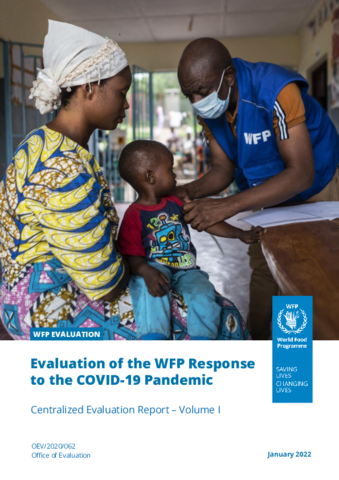
This corporate emergency evaluation assessed WFP’s response to the COVID-19 pandemic from February 2020 – June 2021. The evaluation was conducted under the conditions of the COVID-19 pandemic, including WFP in emergency mode; travel and movement restrictions; and the need to avoid unduly burdening country offices. Accordingly, it adopted a “retrospective developmental” design, which focuses on providing evidence to support adaptation in dynamic environments.
The objective of the evaluation was to assess WFP’s adaptive capacity in its response to the pandemic. An emphasis was placed on how the response developed rather than a traditional theory-based evaluation. Stakeholder engagement and feedback was central to this approach.
The evaluation concluded that:
- Despite numerous challenges posed by the COVID-19 pandemic, WFP adapted to meet the needs created by the pandemic and made valued contributions to the global response. Programming continued and support to national social protection systems was expanded to meet new and emerging needs. Technical advice and support were supplied, along with supply chain and logistics support.
- WFP stayed to deliver. Its global profile changed as WFP’s role was seen as a critical and fundamental ‘systems enabler’ in the global response. However, this commitment shown came at a high human cost and WFP owes an immense debt to its workforce at all levels.
